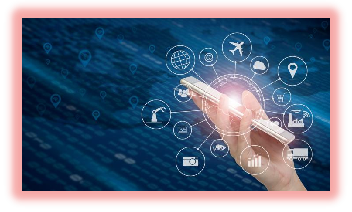With the vigorous development of new generation information technologies such as big data, cloud computing, the Internet of Things, and 5G, the concept of the Internet of Things has gradually entered the public’s view. It can be seen in news hot searches, film and television works, and even in text messages.
The term “Internet of Things” originated in the United States in 1999, when the Auto-ID Lab at the Massachusetts Institute of Technology first clearly proposed the concept of the Internet of Things, which is defined as a network that connects all objects to the Internet through information sensing devices such as Radio Frequency Identification (RFID) for intelligent identification and management. It is an extension and expansion of the traditional Internet, integrating various objects, devices, and sensors into a unified Internet architecture to achieve interconnection between intelligent objects, building smart, digital, and networked systems, ultimately creating a safer, more convenient, and efficient living and working environment for humanity. The “Internet of Things” has three significant characteristics: comprehensive perception, reliable transmission, and intelligent processing, enabling interconnection between people, machines, and objects at any time and place. So how will the AI-powered “Internet of Things” world impact our lives?
Let’s learn more through the video below!
From the video, we understand that as technology advances, people’s demand for a convenient and intelligent lifestyle is continuously increasing, and the Internet of Things is changing our ways of living and working, subtly influencing our lives. Currently, the number of “Internet of Things” devices worldwide has already surpassed the global population. The International Data Corporation (IDC) predicts that by 2025, the number of globally connected “Internet of Things” devices will reach 51.9 billion, and China’s “Internet of Things” market size will reach 300 billion dollars, accounting for one-quarter of the global market.
Through the “Internet of Things,” people can centrally manage and control home appliances and devices. Let’s imagine a day in our lives: in the morning, the curtains in the living room and bedroom automatically open based on outdoor brightness; during washing, the electric toothbrush can automatically adjust the brushing time mode; when preparing to take the subway to work, the smart watch shows the arrival time of the desired subway. When returning home at night, before resting, putting clothes into the washing machine, which can automatically adjust its working mode based on the weight and material of the clothes, ensuring washing effectiveness while saving water. People can control these smart devices at home anytime through mobile apps and other terminal devices, greatly enhancing usability. This is achieved through micro-sensors placed in these smart devices for remote control. The micro-sensors are responsible for collecting various data, and once an anomaly occurs, the data processing center will issue alerts or modify information, then share and transmit it through wireless communication networks, achieving true interconnection of all things.
Currently, “Internet of Things” technology has been widely applied in various fields, gradually penetrating our daily lives. For example: smart homes, smart healthcare, smart cities, etc. Through “Internet of Things” technology, intelligent management and monitoring can be achieved in various aspects of urban life, environment, and safety, improving urban management efficiency.
As a highly integrated and comprehensive application of new generation information technology, the “Internet of Things” has characteristics such as strong penetration, significant driving effect, and good comprehensive benefits, making it another promoter of information industry development following computers, the Internet, and mobile communication networks. The application and development of the Internet of Things facilitate the transformation of production, living, and social management methods toward intelligence, precision, and networking, greatly improving social management and public service levels, spawning a large number of new technologies, products, applications, and models, driving the upgrading of traditional industries and transforming economic development methods, and will become a growth point for future economic development.
The “Internet of Things” has caused a tremendous change in our approach to life; technology changes life. With the rapid development of 5G, big data, and artificial intelligence, the “Internet of Things” will play an increasingly important role in more fields, creating a more intelligent and efficient future living and working environment for humanity, bringing revolutionary changes to our lives. Let’s wait and see!

Source: Tianjin Science and Technology Museum

